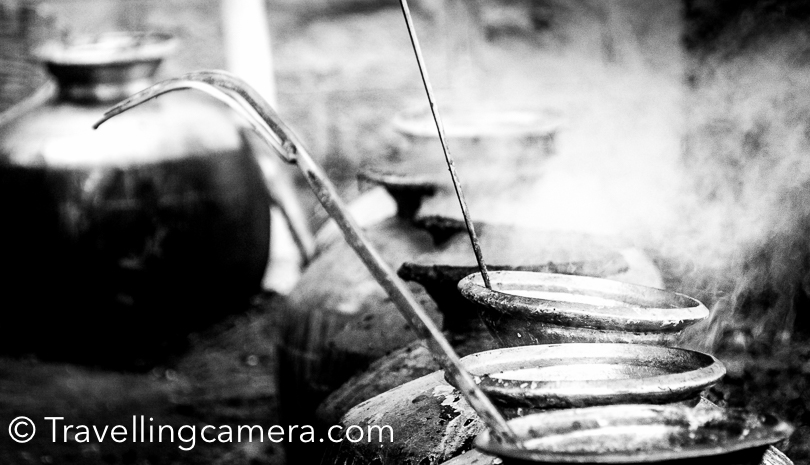Different parts of Himachal has different cuisines and it varies according to the weather & other factors like agricultural status, communities, population density etc. During normal days dal-chawal, roti-sabzi, curd & other mild products are used in meals. But special preparations are done during festivals or special occasions. The whole setup of having specialize cooks making selected food items is called Dham. Dham of Mandi is different than what you get in Kangra. This Photo Journey shares more about Himachali Dham and various aspects associated with it. As a traveller you should find out opportunities to experience Himachali Dham. This post will also share some tips for that :).
Names of utensils used to make Dham -
1. Charoti (The big brass containers you see in these images. These are used for cooking all dishes including rice.)
2. Dabru (Another brass container which you see on the around the cook in photograph below. Dabru is used for serving food to people invited for the treat.)
3. Kadchhe (The bigger )
4. (Himachali Jug made up of brass)
5. Chhadolu (a container made of bamboo, which is used to serve rice)
6. Khara (bigger version of chhadolu, which contains almost 100 times the amount of rice a chhadolu can handle)
I will try to click these items individually and update this post.
The 2 folks in above photograph are popularly known as 'boti'. 'Boti' is pahadi version of chef who specialize in cooking for big celebrations. Usually these folks come a day before and stay for 2-3 days depending upon the kind of celebration. During a day these people cook food for 500-1000 people on an average. In a dham, usually 8-15 curries are served with rice. Sweet dish, khatta, kadhi & Kadhra are always there in a dham. Apart from there are regional preferences. Moong daal with Kashundi is preferred in some region and khatta chana(black chickpea) in other. In some regions, starting of dham is done by serving sweet rice with mix of dry-fruits.
There is anther interesting fact associated with Dham. A day before everyone from community get together to collect utensils from different houses. A note is taken of all the items taken, so that they are well tracked till the event is over and returned back on time. In the morning of dham day, everyone from the community come to join hands to help Botis (chefs) in initial preparations. Cutting vegetables, sorting things, preparing spices etc. The whole show is impossible to run without community help. In towns, this part is also outsourced and things are slowly changing.
Dham always remains a special event for Himachalis and now some of the restaurants in towns like Mandi, Kullu are serving dham dishes.






.jpg)
Comments
Akanksha - Yes, I miss it big time.
Kalpana - True. It's an awesome community effort as well.